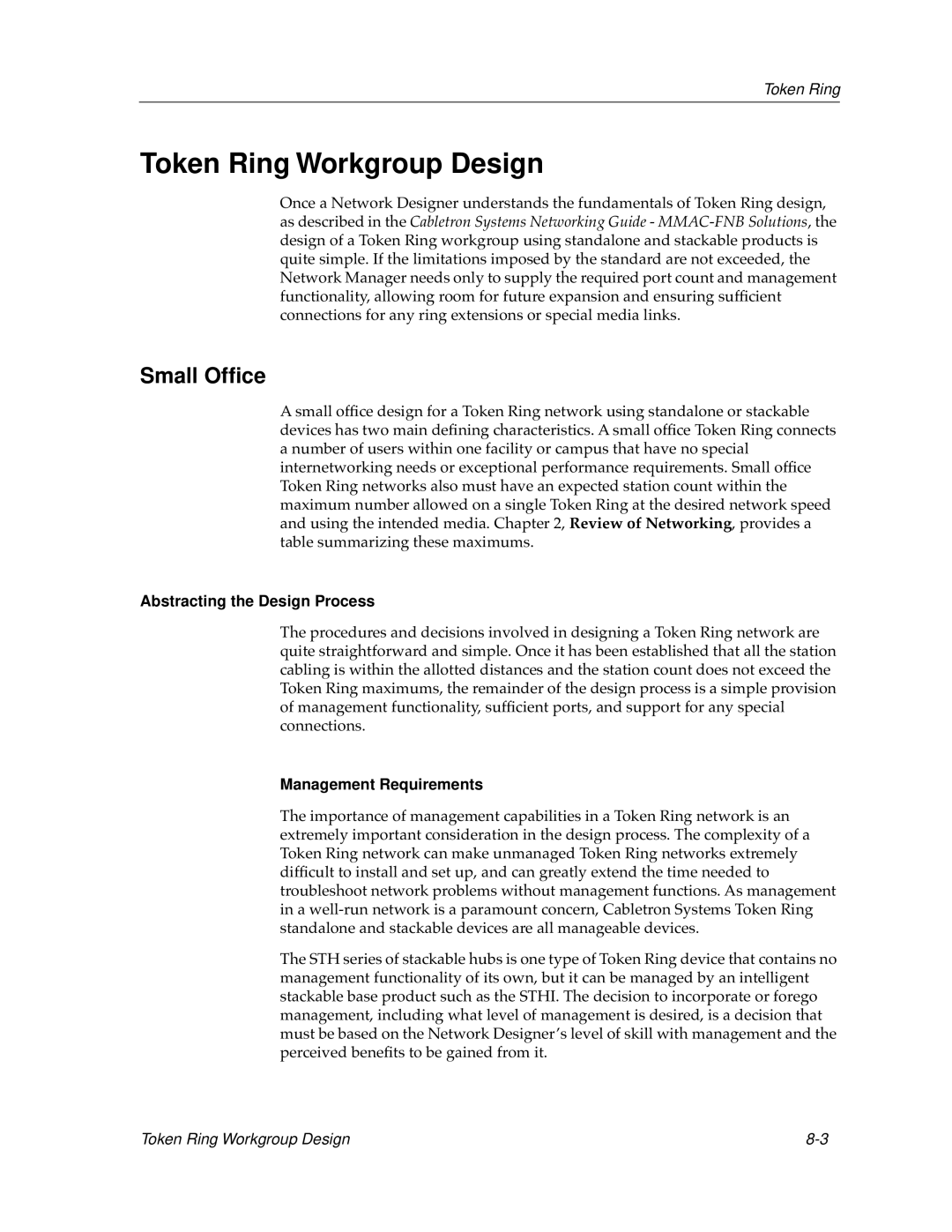Token Ring
Token Ring Workgroup Design
Once a Network Designer understands the fundamentals of Token Ring design, as described in the Cabletron Systems Networking Guide -
Small Office
A small office design for a Token Ring network using standalone or stackable devices has two main defining characteristics. A small office Token Ring connects a number of users within one facility or campus that have no special internetworking needs or exceptional performance requirements. Small office Token Ring networks also must have an expected station count within the maximum number allowed on a single Token Ring at the desired network speed and using the intended media. Chapter 2, Review of Networking, provides a table summarizing these maximums.
Abstracting the Design Process
The procedures and decisions involved in designing a Token Ring network are quite straightforward and simple. Once it has been established that all the station cabling is within the allotted distances and the station count does not exceed the Token Ring maximums, the remainder of the design process is a simple provision of management functionality, sufficient ports, and support for any special connections.
Management Requirements
The importance of management capabilities in a Token Ring network is an extremely important consideration in the design process. The complexity of a Token Ring network can make unmanaged Token Ring networks extremely difficult to install and set up, and can greatly extend the time needed to troubleshoot network problems without management functions. As management in a
The STH series of stackable hubs is one type of Token Ring device that contains no management functionality of its own, but it can be managed by an intelligent stackable base product such as the STHI. The decision to incorporate or forego management, including what level of management is desired, is a decision that must be based on the Network Designer’s level of skill with management and the perceived benefits to be gained from it.
Token Ring Workgroup Design |
